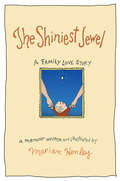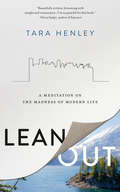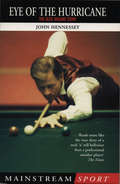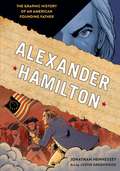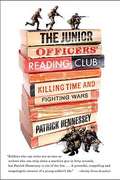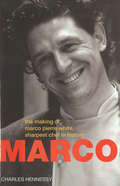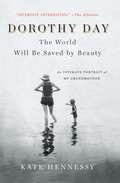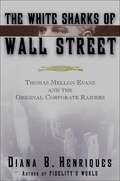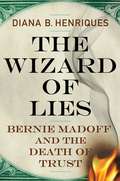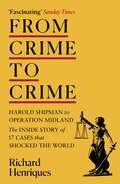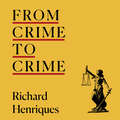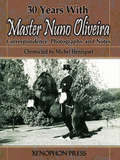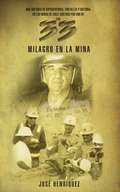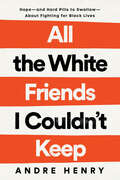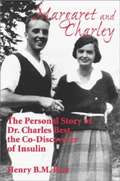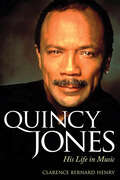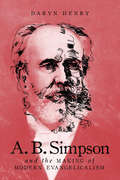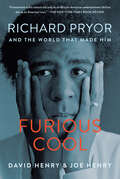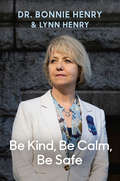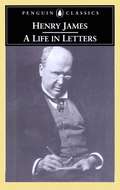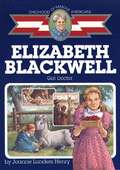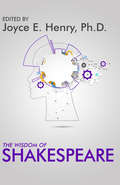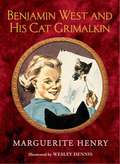- Table View
- List View
The Shiniest Jewel: A Family Love Story
by Marian HenleyAt 49, cartoonist Marian Henley hasn't committed to marrying the man with whom she has been dating for seven years. But as the Big 5-0 looms, she realizes that above all else she wants a child. Her story follows the heartbreaking ups and downs of going through the international adoption process; deciding when it's time to grow up and maybe even get married; and in the end, it's the story of a daughter's relationship with her father, and how becoming a mother finally led her to understand him. THE SHINIEST JEWEL is a touching narrative, accompanied by Marian's winsome drawings, that beautifully weaves together her realizations about the joy, and sometimes heartbreak, of building a family.
Lean Out: A Meditation on the Madness of Modern Life
by Tara Henley"Beautifully written, brimming with insight and reassurance--I'm so grateful for this book." -Olivia Sudjic, author of ExposureA deeply personal and informed reflection on the modern world--and why so many feel disillusioned by it.In 2016, journalist Tara Henley was at the top of her game working in Canadian media. She had traveled the world, from Soweto to Bangkok and Borneo to Brooklyn, interviewing authors and community leaders, politicians and Hollywood celebrities. But when she started getting chest pains at her desk in the newsroom, none of that seemed to matter.The health crisis--not cardiac, it turned out, but anxiety--forced her to step off the media treadmill and examine her life and the stressful twenty-first century world around her. Henley was not alone; North America was facing an epidemic of lifestyle-related health problems. And yet, the culture was continually celebrating the elite few who thrived in the always-on work world, those who perpetually leaned in. Henley realized that if we wanted innovative solutions to the wave of burnout and stress-related illness, it was time to talk to those who had leaned out. Part memoir, part travelogue, and part investigation, Lean Out tracks Henley's journey from the heart of the connected city to the fringe communities that surround it. From early retirement enthusiasts in urban British Columbia to moneyless men in rural Ireland, Henley uncovers a parallel track in which everyday citizens are quietly dropping out of the mainstream and reclaiming their lives from overwork. Underlying these disparate movements is a rejection of consumerism, a growing appetite for social contribution, and a quest for meaningful connection in this era of extreme isolation and loneliness. As she connects the dots between anxiety and overwork, Henley confronts the biggest issues of our time.
Alex Higgins: Eye of the Hurricane
by J HennesseyWhen Alex Higgins' first manager, John McLaughlin, bestowed the nickname 'Hurricane Higgins' on the young, feisty snooker player he had no idea just how apt it was to prove over the next thirty years. Eye of the Hurricane details a sad but uplifting story of a man who had everything to play for but now has to play hard for anything he can get. It describes Higgins, sitting fitfully on snooker's sidelines, still has a story to tell, another controversy to spark. Author John Hennessey promises a 'wart and all' account of Alex Higgin's life and that is precisely what he delivers in this thoroughly absorbing book. . . well-told but cautionary tale of how narr ow the line is between genius and insanity 'This first proper account of Higgin's life is all the more clear-eyed for being written without his co-operation.
Alexander Hamilton: The Graphic History of an American Founding Father
by Jonathan HennesseyA graphic novel biography of the American legend who inspired the hit Broadway musical Hamilton. Alexander Hamilton was one of the most influential figures in United States history—he fought in the Revolutionary War, helped develop the Constitution, and as the first Secretary of the Treasury established landmark economic policy that we still use today. Cut down by a bullet from political rival Aaron Burr, Hamilton has since been immortalized alongside other Founding Fathers such as George Washington and Thomas Jefferson—his likeness even appears on the ten-dollar bill. In this fully-illustrated and impeccably researched graphic novel-style history, author Jonathan Hennessey and comic book illustrator Justin Greenwood bring Alexander Hamilton&’s world to life, telling the story of this improbable hero who helped shape the United States of America.
The Junior Officers Reading Club
by Patrick HennesseyFor the first time in a generation British soldiers are once again fighting at close quarters, coming under sustained and vicious firepower in some of the most violent fighting the modern army has endured. Yet the same soldiers also serve on international peacekeeping missions, or counter insurgency. Sometimes they do all three in the same country. The Junior Officers' Reading Club is the story of how one of these soldiers was made, through the breeding ground of Sandhurst, out into the nightmare of Iraq and Afghanistan's Helmand Province, pinned down by the Taliban, living only from moment to moment.
Marco Pierre White: Making of Marco Pierre White,Sharpest Chef in History
by Charles HennessyMarco was born of working-class parents on a bleak council estate in Leeds, and his Italian mother died when he was six years old. Today he has become a star chef of international renown, a controversial media celebrity, a national icon of the 1980s and 1990s, and a multimillionaire entrepreneur - all before the age of 40. How has this staggering rise to fame and fortune been achieved? MPW (as he calls himself and many of his new restaurants) is today widely regarded as the best cook in the country, but his astonishing talents and understanding of food are only part of the explanation. As this fascinating book reveals, there are many sides to this complex man which the massive media coverage he has received over the years have never revealed. Charles Hennessy tells the story with insight: the unpromising early life, his first job as a kitchen porter in Harrogate, the epiphany at the age of 17 when he went to work at the Box Tree restaurant in Ilkley, his arrival in London, learning under the Roux brothers, Pierre Koffmann and Raymond Blanc, and the opening of his own first restaurant, Harvey's from whence his fame and fortune grew.
Dorothy Day: The World Will Be Saved by Beauty
by Kate Hennessy&“An intimate, revealing and sometimes wrenching family memoir of the journalist and social advocate who is now being considered for canonization&” (The New York Times), told with illuminating detail by her granddaughter.Dorothy Day (1897-1980) was a prominent Catholic, writer, social activist, and co-founder of a movement dedicated to serving the poorest of the poor. Her life has been documented through her own writings as well as the work of historians, theologians, and academics. What has been missing until now is a more personal account from the point of view of someone who knew her well. Dorothy Day:The World Will Be Saved by Beauty is a frank and reflective, heartfelt and humorous portrayal written by her granddaughter, Kate Hennessy.Dorothy Day, writes Hennessy, is an unusual candidate for sainthood. Before her conversion, she lived what she called a &“disorderly life,&” during which she had an abortion and then gave birth to a child out of wedlock. After her conversion, she was both an obedient servant and a rigorous challenger of the Church. She was a prolific writer whose books are still in print and widely read. Although compassionate, Hennessy shows Day to be driven, dogmatic, loving, as well as judgmental, in particular with her only daughter, Tamar. She was also full of humor and laughter and could light up any room she entered.An undisputed radical heroine, called &“a saint for the occupy era&” by TheNew Yorker, Day&’s story unfolds against a backdrop of New York City from the 1910s to the 1980s and world events spanning from World War I to Vietnam. This thoroughly researched and intimate biography provides a valuable and nuanced portrait of an undersung and provocative American woman. &“Frankly,&” says actor and activist Martin Sheen, &“it is a must-read.&”
The White Sharks of Wall Street: Thomas Mellon Evans and the Original Corporate Raiders
by Diana B. HenriquesIt almost seems that Thomas Mellon Evans was a man so far ahead of his contemporaries that he had moved into the shadows before the full force of his business style had dawned on the rest of corporate America. At every step in his career, he was barging in where few would follow -- at first. But follow they did, at last." -- from the PrologueThe first in-depth portrait of the life and times of the trailblazing financier Thomas Mellon Evans -- the man who pursued wealth and power in the 1950s with a brash ruthlessness that forever changed the face of corporate America. Long before Michael Milken was using junk bonds to finance corporate takeovers, Thomas Mellon Evans used debt, cash, and the tax code to obtain control of more than eighty American companies. Long before investors began to lobby for "shareholder's rights," Evans was demanding that public companies be run only for their shareholders -- not for their employees, their executives, or their surrounding communities. To some, Evans's merciless style presaged much that is wrong with corporate life today. To others, he intuitively knew what was needed to keep America competitive in the wake of a global war. In The White Sharks of Wall Street, New York Times investigative reporter Diana Henriques provides the first biography of this pivotal figure in American business history. She also portrays the other pioneering corporate raiders of the postwar period, such as Robert Young and Louis Wolfson, and shows how these men learned from one another and advanced one another's takeover tactics. She relates in dramatic detail a number of important early takeover fights -- Wolfson's challenge to Montgomery Ward, Young's move on the New York Central Railroad, the fight for Follansbee Steel -- and shows how they foreshadowed the desperate battle waged by Tom Evans's son, Ned Evans, to keep the British raider Robert Maxwell away from his Macmillan publishing empire during the 1980s. Henriques also reaches beyond the business arena to tally the tragic personal cost of Evans's pursuit of success and to show how the family dynasty shattered when his sons were driven by his own stubbornness and pride to become his rivals. In the end, the battling patriarch faced his youngest son in a poignant battle for control at the Crane Company, the once-famous Chicago plumbing and valve company that Tom Evans had himself seized in a brilliant takeover coup twenty-five years earlier. The White Sharks of Wall Street is a fascinating portrait of an extraordinary man, whose career blazed across the sky and then sank into obscurity -- but not before he had provided the template for how American business would operate for the next four decades.
The Wizard of Lies: Bernie Madoff and the Death of Trust
by Diana B. HenriquesThe inside story of Bernie Madoff and his $65 billion Ponzi scheme, with surprising and shocking new details from Madoff himself. Who is Bernie Madoff, and how did he pull off the biggest Ponzi scheme in history? These questions have fascinated people ever since the news broke about the respected New York financier who swindled his friends, relatives, and other investors out of $65 billion through a fraud that lasted for decades. Many have speculated about what might have happened or what must have happened, but no reporter has been able to get the full story -- until now. In The Wizard of Lies, Diana B. Henriques of The New York Times-- who has led the papers coverage of the Madoff scandal since the day the story broke -- has written the definitive book on the man and his scheme, drawing on unprecedented access and more than one hundred interviews with people at all levels and on all sides of the crime, including Madoff's first interviews for publication since his arrest. Henriques also provides vivid details from the various lawsuits, government investigations, and court filings that will explode the myths that have come to surround the story. A true-life financial thriller, The Wizard of Lies contrasts Madoff's remarkable rise on Wall Street, where he became one of the country's most trusted and respected traders, with dramatic scenes from his accelerating slide toward self-destruction. It is also the most complete account of the heartbreaking personal disasters and landmark legal battles triggered by Madoff's downfall -- the suicides, business failures, fractured families, shuttered charities -- and the clear lessons this timeless scandal offers to Washington, Wall Street, and Main Street.
From Crime to Crime: Harold Shipman to Operation Midland - 17 cases that shocked the world
by Richard Henriques'If Henriques were a fictional character, he would be a celebrity, the kind of dashing, hawkish QC who turns up in Agatha Christie novels and is recognised by everybody... There is an undeniable, lawyerly authenticity about Henriques's book. He takes us meticulously through his cases... It is fascinating to read.' - Dominic Sandbrook, Sunday TimesSir Richard Henriques has been centre stage in some of the most high-profile and notorious cases of the late 20th and early 21st centuries. After taking silk in 1986, over the course of the next 14 years he appeared in no fewer than 106 murder trials, including prosecuting Harold Shipman, Britain's most prolific serial killer, and the killers of James Bulger. In 2000 he was appointed to the High Court Bench and tried the transatlantic airline plot, the Morecambe Bay cockle pickers, the killing of Jean Charles de Menezes, and many other cases. He sat in the Court of Appeal on the appeals of Barry George, then convicted of murdering Jill Dando, and Jeremy Bamber, the White House Farm killer. In From Crime to Crime he not only recreates some of his most famous cases but also includes his trenchant views on the state of the British judicial system; how it works - or doesn't - and the current threats to the rule of law that affect us all.
From Crime to Crime: Harold Shipman to Operation Midland - 17 cases that shocked the world
by Richard HenriquesSir Richard Henriques has been centre stage in some of the most high-profile and notorious cases of the late 20th and early 21st centuries. After taking silk in 1986, over the course of the next 14 years he appeared in no fewer than 106 murder trials, including prosecuting Harold Shipman, Britain's most prolific serial killer, and the killers of James Bulger. In 2000 he was appointed to the High Court Bench and tried the transatlantic airline plot, the Morecambe Bay cockle pickers, the killing of Jean Charles de Menezes, and many other cases. He sat in the Court of Appeal on the appeals of Barry George, then convicted of murdering Jill Dando, and Jeremy Bamber, the White House Farm killer. In From Crime to Crime Richard Henriques tells the story behind his most famous cases and includes his trenchant views on the state of the British judicial system; how it works - or doesn't - and the current threats to the rule of law that affect us all.(P) 2020 Hodder & Stoughton Ltd
30 Years With Master Nuno Oliveira: Correspondence, Photographs, and Notes
by Michel HenriquetThis classical text, which knowledgeable horsemen have been anxiously awaiting for years, is finally available in English. Henriquet's personal record of correspondence provides a unique window into the private problem-solving dialogue between master and student. Now a master écuyer in his own right, Henriquet embellishes this new edition with 50 photographs from his personal collection. This first and only English edition includes many more photographs of Nuno Oliveira and his teacher than earlier editions. It has also been embellished with a glossary and a descriptive table of contents for the 71 chapters.
Miracle in the Mine: One Man's Story of Strength and Survival in the Chilean Mines
by José HenriquezOn October 13, 2010, millions of television viewers on five continents literally stopped everything to watch the amazing rescue of 33 men trapped underground in the mine of San José de Copiapó in northern Chile. What had seemed at first a hopeless tragedy later became a triumph of human effort, courage, perseverance, and expertise. For 17 excruciating days no one knew whether any of the miners had survived the collapse of the mine shaft, nor were the surviving miners aware of any rescue attempts. They spent a total of 69 days trapped underground. And it was there, in that frightening cavern, that one man took on the responsibility of encouraging the others and use the tragedy as an opportunity to share his faith. Miracle in the Mine is the story of José Henríquez. The testimony of a man who was no stranger to danger even before he found himself trapped 2,300 feet under the earth in the San José mine. A man who has unequivocally demonstrated his integrity, courage, and moral strength both before, during, and after the mining accident, and who is now using this experience to inspire the world.
All the White Friends I Couldn't Keep: Hope--and Hard Pills to Swallow--About Fighting for Black Lives
by Andre HenryA leading voice for social justice reveals how he stopped arguing with white people who deny the ongoing legacy of racism—and offers a proven path forward for Black people and people of color based on the history of nonviolent struggle.&“A moving personal journey that lends practical insight for expanding and strengthening the global antiracist movement.&”—Patrisse Khan-Cullors, co-founder of Black Lives Matter, bestselling author of When They Call You a TerroristWhen the rallying cry &“Black Lives Matter&” was heard across the world in 2013, Andre Henry was one of the millions for whom the movement caused a political awakening and a rupture in some of his closest relationships with white people. As he began using his artistic gifts to share his experiences and perspective, Henry was aggrieved to discover that many white Americans—people he called friends and family—were more interested in debating whether racism existed or whether Henry was being polite enough in the way he used his voice.In this personal and thought-provoking book, Henry explores how the historical divides between Black people and non-Black people are expressed through our most mundane interactions, and why this struggle won&’t be resolved through civil discourse, diversity hires, interracial relationships, or education. What we need is a revolution, one that moves beyond symbolic progress to disrupt systems of racial violence and inequality in tangible, creative ways.Sharing stories from his own path to activism—from studying at seminary to becoming a student of nonviolent social change, from working as a praise leader to singing about social justice—and connecting those experiences to lessons from successful nonviolent struggles in America and around the world, Andre Henry calls on Black people and people of color to divest from whiteness and its false promises, trust what their lived experiences tell them, and practice hope as a discipline as they work for lasting change.
Margaret and Charley: The Personal Story of Dr. Charles Best, the Co-Discoverer of Insulin
by Henry B.M. BestAlthough Charles Best is known for discovering insulin, the story of his life neither begins nor ends with that one moment. Not only did he make many other discoveries, he was also one half of an extraordinary couple who, during their almost sixty years together, were involved in many of the significant events of the twentieth century. Margaret & Charley is the story of these two people from their beginnings on the east coast at the turn of the century through the years that followed. Through diaries, scrapbooks, photograph albums, and other documentation, the details of their lives are shared with the reader.
Quincy Jones: His Life in Music (American Made Music Series)
by Clarence Bernard HenryQuincy Jones (b. 1933) is one of the most prolific composers, arrangers, bandleaders, producers, and humanitarians in American music history and the recording and film industries. Among pop music fans he is perhaps most famous for producing Michael Jackson's album, Thriller. Clarence Bernard Henry focuses on the life, music, career, and legacy of Jones within the social, cultural, historical, and artistic context of American, African American, popular, and world music traditions. Jones's career has spanned over sixty years, generating a substantial body of work with over five hundred compositions and arrangements. The author focuses on this material as well as many of Jones's accomplishments: performing as a young trumpeter in the bands of Lionel Hampton and Dizzy Gillespie, becoming the first African American to hold an executive position in the competitive white-owned recording industry, breaking racial barriers as a composer in the Hollywood film and television industries, producing the best-selling album of all time, and receiving numerous Grammy Awards. The author also discusses many of Jones's compositions, arrangements, and recordings and his compositional study in France with legendary teacher Nadia Boulanger. In addition, details are provided about Jones's distinct ability as one of the most innovative composers and arrangers who incorporates many different styles of music, techniques, and creative ideas in his compositions, arrangements, and film scores. He collaborated with an array of musicians and groups such as Louis Armstrong, Duke Ellington, Miles Davis, Ella Fitzgerald, Sarah Vaughan, Frank Sinatra, Clifford Brown, Ray Charles, Michael Jackson, USA for Africa, and many others. Clarence Bernard Henry shows how Jones has, throughout his career, wholeheartedly embraced philosophies of globalization and cultural diversity in his body of work, collaborations, humanitarian projects, and musical creativity.
A.B. Simpson and the Making of Modern Evangelicalism (McGill-Queen's Studies in the History of Religion #2.86)
by Daryn HenryA shrewd synthesizer, gifted popularizer, and inspiring founder of the Christian and Missionary Alliance movement, A.B. Simpson (1843–1919) was enmeshed in the most crucial threads of evangelical Christianity at the turn of the twentieth century. <p><p>Daryn Henry presents Simpson's life and ministry as a vivid, fascinating, and paradigmatic study in evangelical religious culture, during a time when the conservative wing of the movement has often been overlooked. Simpson's ministry, Henry explains, fused the classic evangelical emphasis on revivalist conversion with the intensification of that sensibility in the quest for the deeper Christian life of holiness. Recovering the practice of divine healing, Simpson emphasized a dynamically empowered and supernaturally animated Christianity that would spill over into nascent Pentecostalism. His encouragement of cross-cultural missions was part of a trend that unleashed the dramatic rise of world Christianity across the Global South. All the while, his Biblical literalism, antagonism to modernist theology, campaigns against evolution, and views on premillennialism, Biblical prophecy, and the role of Israel in the end times made Simpson a precursor of the fundamentalist melees of subsequent decades. <p><p>From his upbringing in rural Canada and confessional Scottish Presbyterianism, Simpson journeyed into the heart of American evangelicalism revolving around his base in New York City. Against most previous writing on Simpson, Henry's biography presents both continuities and discontinuities in the development of modern interdenominational evangelicalism out of the denominational evangelicalism of the nineteenth century.
A.B. Simpson and the Making of Modern Evangelicalism (McGill-Queen's Studies in the History of Religion #2.86)
by Daryn HenryA shrewd synthesizer, gifted popularizer, and inspiring founder of the Christian and Missionary Alliance movement, A.B. Simpson (1843-1919) was enmeshed in the most crucial threads of evangelical Christianity at the turn of the twentieth century. Daryn Henry presents Simpson's life and ministry as a vivid, fascinating, and paradigmatic study in evangelical religious culture, during a time when the conservative wing of the movement has often been overlooked. Simpson's ministry, Henry explains, fused the classic evangelical emphasis on revivalist conversion with the intensification of that sensibility in the quest for the deeper Christian life of holiness. Recovering the practice of divine healing, Simpson emphasized a dynamically empowered and supernaturally animated Christianity that would spill over into nascent Pentecostalism. His encouragement of cross-cultural missions was part of a trend that unleashed the dramatic rise of world Christianity across the Global South. All the while, his Biblical literalism, antagonism to modernist theology, campaigns against evolution, and views on premillennialism, Biblical prophecy, and the role of Israel in the end times made Simpson a precursor of the fundamentalist melees of subsequent decades. From his upbringing in rural Canada and confessional Scottish Presbyterianism, Simpson journeyed into the heart of American evangelicalism revolving around his base in New York City. Against most previous writing on Simpson, Henry's biography presents both continuities and discontinuities in the development of modern interdenominational evangelicalism out of the denominational evangelicalism of the nineteenth century.
Furious Cool: Richard Pryor and the World That Made Him
by David Henry Joe Henry“Addictively readable . . . Someday, when fewer people know Richard Pryor’s name, Furious Cool will be the best defense against the worst sort of forgetting--the kind that involves who we are now, who we loved once, and why.” —EsquireRichard Pryor was arguably the single most influential performer of the second half of the twentieth century, and certainly he was the most successful black actor/comedian ever. Controversial and somewhat enigmatic during his life, Pryor’s performances opened up a whole new world of possibilities, merging fantasy with angry reality in a way that wasn’t just new--it was theretofore unthinkable. Now, this groundbreaking and revelatory work brings him to life again both as a man and as an artist, providing an in-depth appreciation of his talent and his lasting influence, as well as an insightful examination of the world he lived in and the myriad influences that shaped both his persona and his art. “A testament to [Pryor’s] stature not only as an African-American entertainment idol but also as an American icon . . . The Henrys’ exuberant tribute may well evoke renewed interest in a performance genius who remade the face of American stand-up comedy.” —The New York Times Book Review“A sleek, highly literate biography that places the comic in the pop-cultural context of his times.” —Bloomberg News“Richard Pryor was the most free black man of the twentieth century. He also was a comic genius. This book gives the definitive reasons why he was so free and so sublime.” —Dr. Cornel West“David Henry and Joe Henry have brought Richard Pryor back to pulsating life, affirming both his humanity and his immortality as a comic--and tragic--genius . . . Furious Cool is a fabulous history, alive with fascinating characters.” —The Huffington Post
Be Kind, Be Calm, Be Safe: Four Weeks that Shaped a Pandemic
by Dr. Bonnie Henry Lynn HenryFrom the BC doctor who has become a household name for leading the response to the pandemic, a personal account of the first weeks of COVID, for readers of Sam Nutt's Damned Nations and James Maskayk's Life on the Ground Floor.Dr. Bonnie Henry has been called "one of the most effective public health figures in the world" by The New York Times. She has been called "a calming voice in a sea of coronavirus madness," and "our hero" in national newspapers. But in the waning days of 2019, when the first rumours of a strange respiratory ailment in Wuhan, China began to trickle into her office in British Colombia, these accolades lay in a barely imaginable future.Only weeks later, the whole world would look back on the previous year with the kind of nostalgia usually reserved for the distant past. With a staggering suddenness, our livelihoods, our closest relationships, our habits and our homes had all been transformed.In a moment when half-truths threatened to drown out the truth, when recklessness all too often exposed those around us to very real danger, and when it was difficult to tell paranoia from healthy respect for an invisible threat, Dr. Henry's transparency, humility, and humanity became a beacon for millions of Canadians. And her trademark enjoinder to be kind, be calm, and be safe became words for us all to live by.Coincidentally, Dr. Henry's sister, Lynn, arrived in BC for a long-planned visit on March 12, just as the virus revealed itself as a pandemic. For the four ensuing weeks, Lynn had rare insight into the whirlwind of Bonnie's daily life, with its moments of agony and gravity as well as its occasional episodes of levity and grace. Both a global story and a family story, Be Kind, Be Calm, Be Safe combines Lynn's observations and knowledge of Bonnie's personal and professional background with Bonnie's recollections of how and why decisions were made, to tell in a vivid way the dramatic tale of the four weeks that changed all our lives.Be Kind, Be Calm, Be Safe is about communication, leadership, and public trust; about the balance between politics and policy; and, at heart, about what and who we value, as individuals and a society.The authors' advance from the publisher will be donated to charities with a focus on alleviating communities hit particularly hard by the pandemic: True North Aid with its Covid-19 response in Northern Indigenous communities, and First Book Canada, with its focus on reading and literacy for underserved, marginalized youth.
Miracle in the Mountains
by Inez Henry Harnett KaneThe book Miracle in the Mountains: The Inspiring Story of Martha Berry's Crusade for the Mountain People of the South tells the story of the educator and founder of Berry College in Rome, Georgia.
Henry James: A Life in Letters
by James HenryJames's correspondents included presidents and prime ministers, painters and great ladies, actresses and bishops, and the writers Robert Louis Stevenson, H.G. Wells and Edith Wharton. This fully-annotated selection from James's eloquent correspondence allows the writer to reveal himself and the fascinating world in which he lived. The letters provide a rich and fascinating source for James' views on his own works, on the literary craft, on sex, politics and friendship. Together they constitute, in Philip Horne's own words, James' 'real and best biography'.
Elizabeth Blackwell: Girl Doctor
by Joanne Landers HenryThe life of the first woman doctor in the Unites States, who worked in England and America to open the field of medicine to women.
The Wisdom of Shakespeare
by Joyce HenryIf the transparent pictures of a cinematograph roll were found clipped apart in a medley of separate pictures, the test of their reunion in a reconstituted film would be the air of life in the moving picture thrown from it on the shimmering screen. <P><P>And so it is with those elements of a living portrait to be found in the extra-dramatic bits of Shakespeare's work. This statement has been made before; has been supported; has been denied. The present writer says merely Read and judge.
Benjamin West and His Cat Grimalkin
by Marguerite HenryThis is the story of a Quaker lad and his cat who lived in America when Pennsylvania was still an English province, and the Indians were saying, "Itah! Good be to you!" Benjamin's father kept Door-Latch Inn in the County of Chester. Benjamin had four brothers-John, Thomas, Samuel and Joseph-and five sisters named Rachel, Sarah, Hannah, Mary and Elizabeth. He had a niece named Sally, too. Benjamin's family were all Quakers. Papa was the best Quaker of them all. When he prayed, his voice trembled and quaked until the very roof timbers shook! Benjamin's fingers often itched to draw "images" of people or animals or landscapes. But Mama and Papa didn't approve. They thought pictures were needless. They said images should be carried in the heart, that pictures were gay and gaudy and showed a worldly spirit. Of course they had no pictures in Door- Latch Inn. Benjamin never saw one until he grew up to be seven years old and painted one himself. Grimalkin, the glossy black cat, suggested-for he could almost talk-that Benjamin make an image of little Sally, and after that he drew so many that everybody knew he could be nothing but an artist. Some people say it was the Mohawk Indians who helped Benjamin win fame and fortune as an artist. Some say it was an artist and seaman by the name of William Williams. And some insist that it was Uncle Phineas, a merchant of Philadelphia. But if Benjamin West himself could have settled the question, he would probably say it was his cat Grimalkin.
